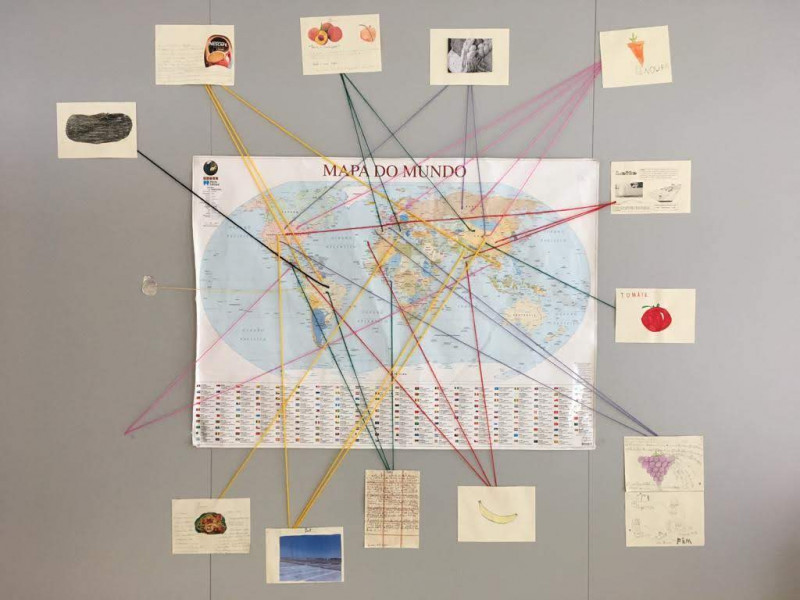How to contribute to a social just world? The experience in Portugal
2. Children learn more
2.1. The origin of food and inequalities (Age range: 7+)
Children bring home a sheet with the proposal to search about the origin of food.
This proposal can be connected to a previous stimulus activity on social and economic inequalities.
“You certainly remember about the videos we watched concerning inequalities that exist all over the world and how our choices are related to them. Do you remember how the banana producer earn so little and how humble his house was? We had some curiosities to clarify”
A challenge is proposed to children: to search for some information with the help of their family.
Examples of prompts for research:
- Pick a food item of your choice and draw it or collect pictures
- With the help of your family, find answers to some of these questions:
- How is it produced?
- What's its origin?
- What are the places in the world where there is greater production of it?
- How did it come to you?
- Are the people who produced it justly paid for their work?
Alternatively, the research can be conducted at school, individually or in small groups of children.
Children present their research to their peers. The drawing or picture is connected to countries in the map where that food item is mainly produced (according to the child’s research).
A digital map can also be created in the ISOTIS platform.
.png)

A whole group discussion was implemented for children to share the results of the home challenge. The majority of children completed the research at home and brought it to school to share with their peers. The activity was divided in three different moments, in separate days, so all children could present the research they conducted. Teachers (and children) referred to the moment as “a debate”. Repeatedly, a child would go near the teacher leading the activity and presented his research to the class. Then, the drawing or picture of the food item would be exposed and linked to the countries where it was mainly produced in the classroom map, using wool. Based on the children’s comments about the farmer’s economic conditions, the teachers would elicit some discussion on social and economic inequalities.
For example, sometimes children included the concept of fairness and justice in their responses: “the people who produce salt aren’t justly paid”. Referring to carrot farmers, a child read “farmers aren’t well payed”. When the teacher asked why, a child said that “they spend many days producing” and another child completed “the work is a lot and they are paid little”. The teacher highlighted the work it took to take care of food and asked if it was fair that workers were paid so little. Children answered “no”. One child mentioned “People [referring to farmers] aren’t paid justly because the person who sells wants to have all the money”. Another child mentioned “only 6% of the value payed goes to the [chocolate] producer”. After the teacher explained how much 6% was, children showed some outrage.
Links with the curriculum:
- Sciences: climate and plants
- Geography: countries and continents in the world map, characteristics of each country and region, cardinal points
- Literacy: writing and reading
- Mathematics: awareness of numbers and percentages on inequalities
- Citizenship education: human rights, interculturality, social justice